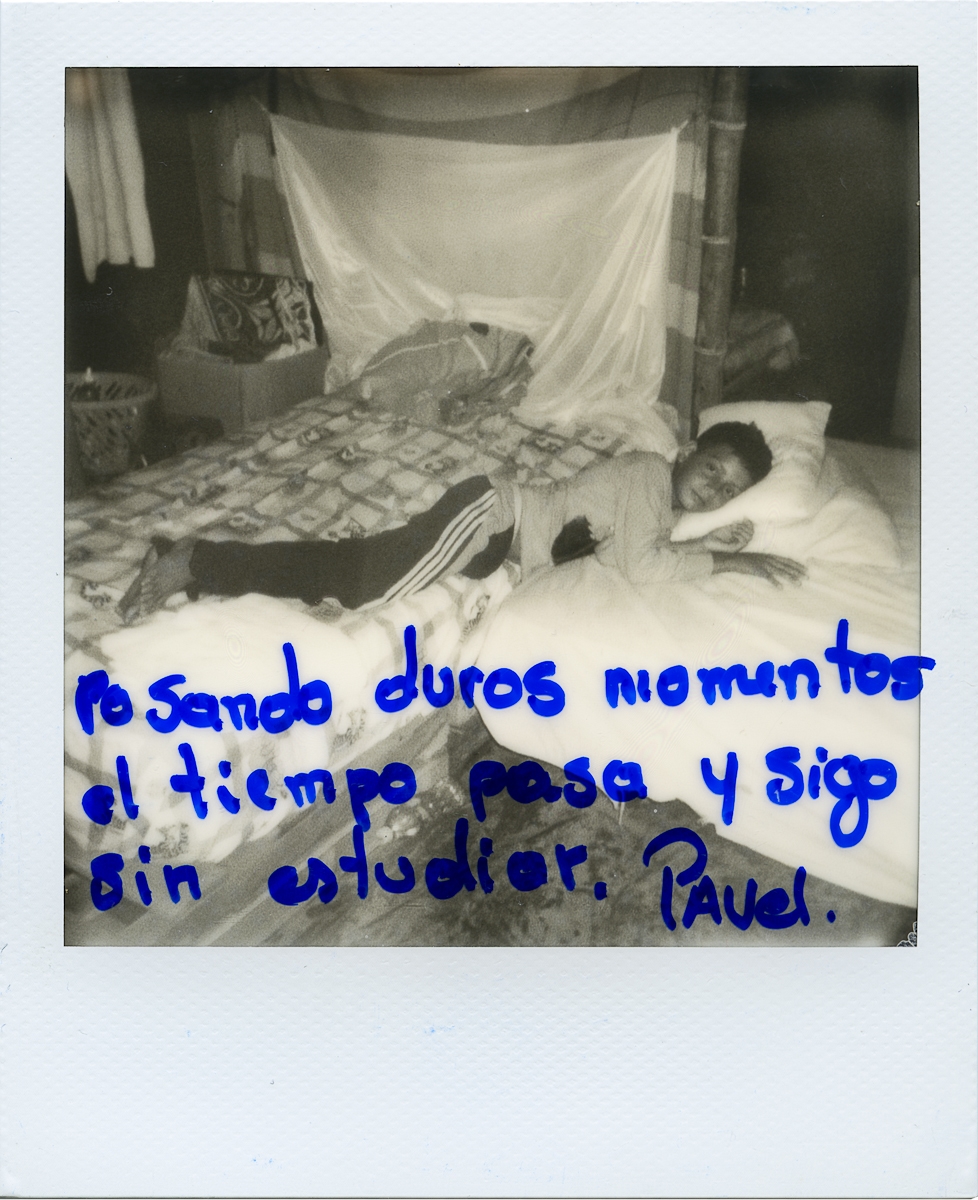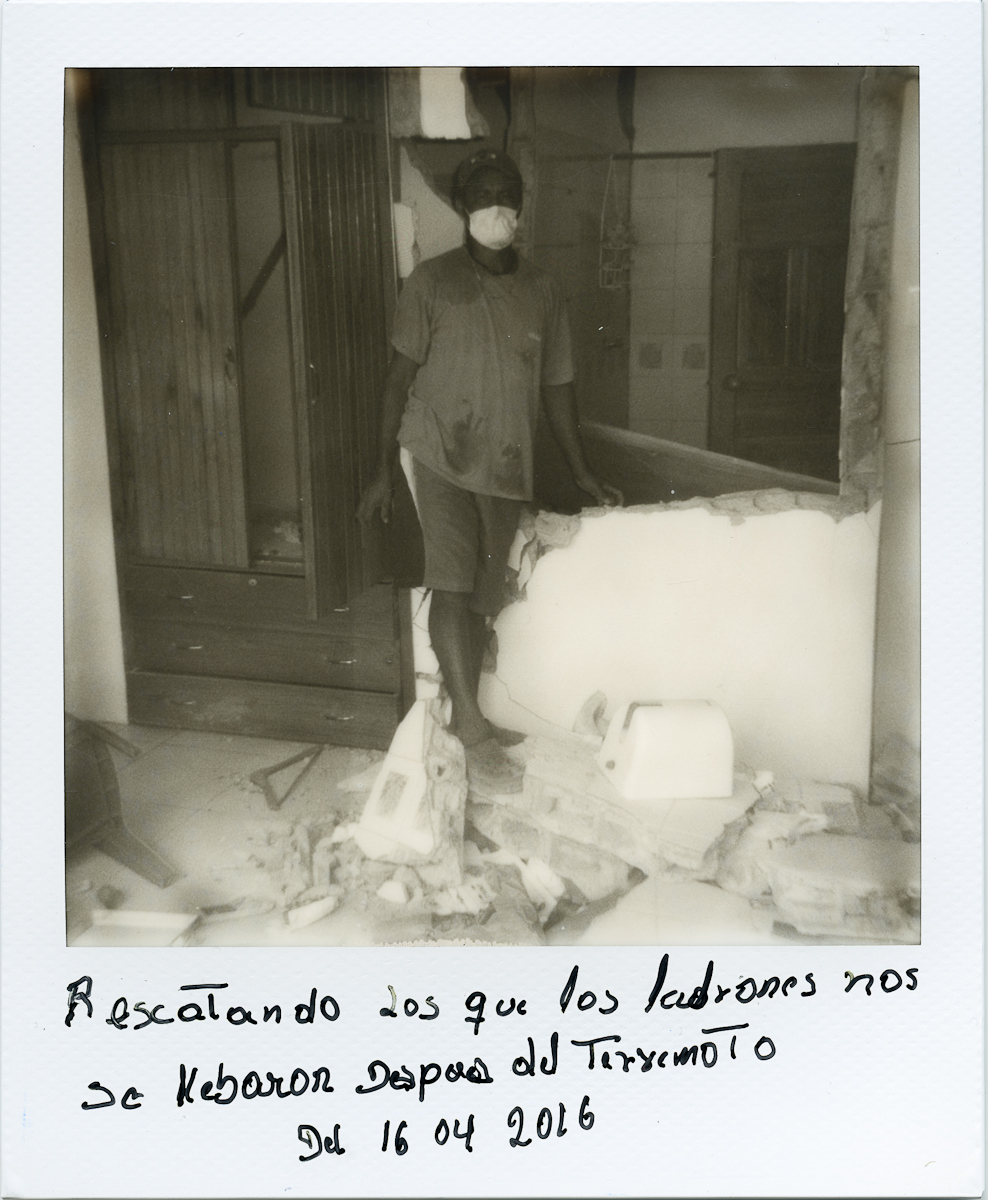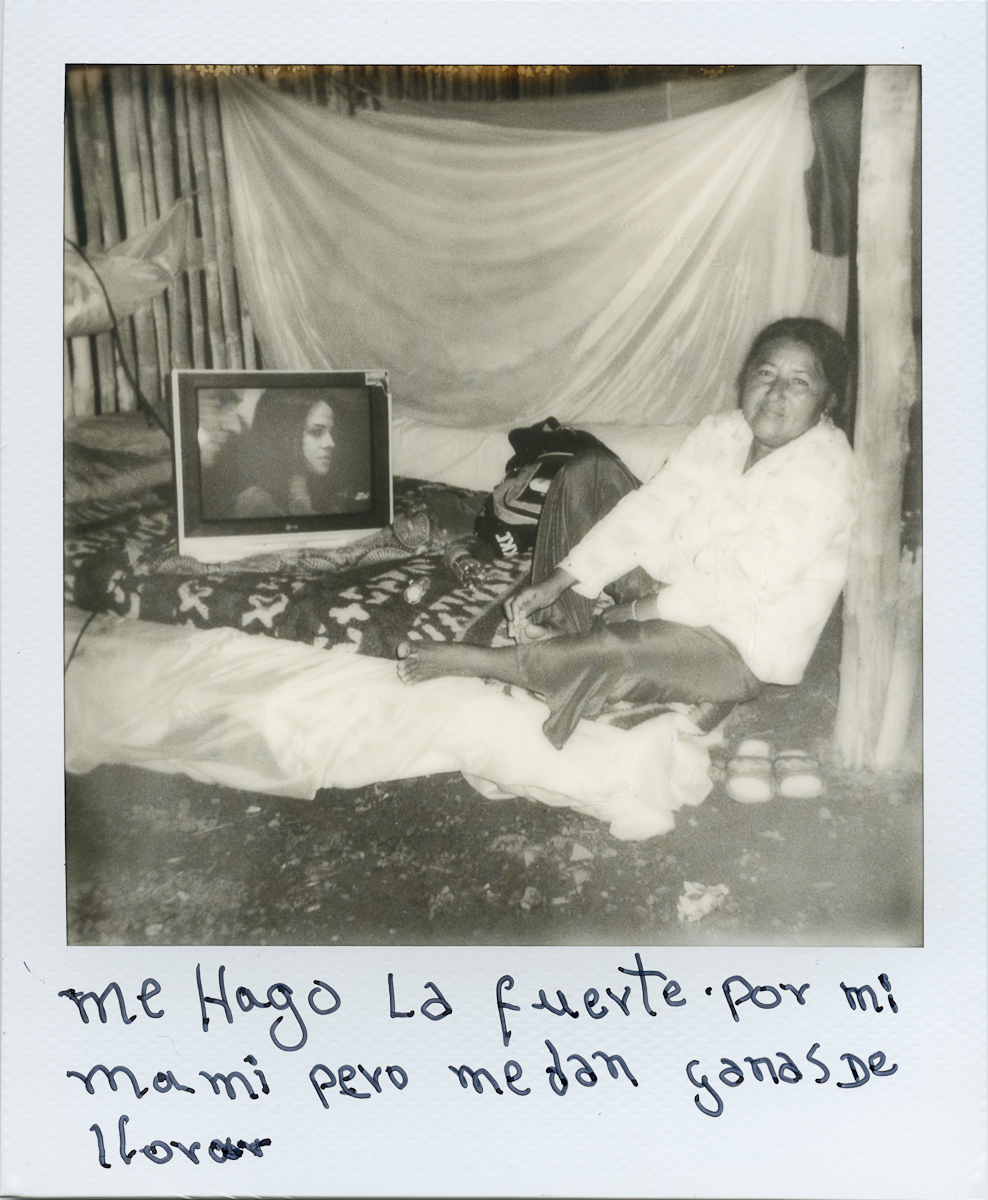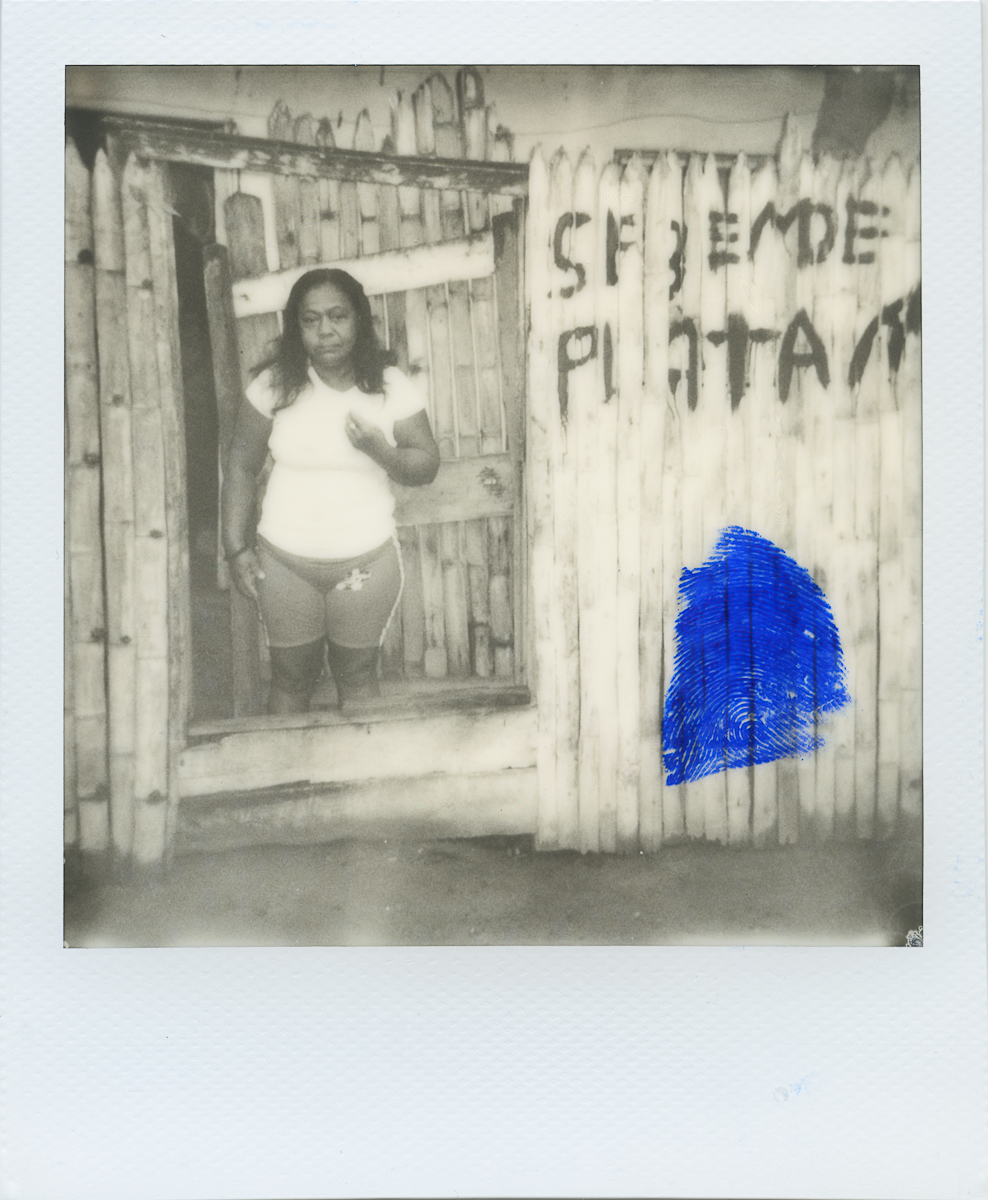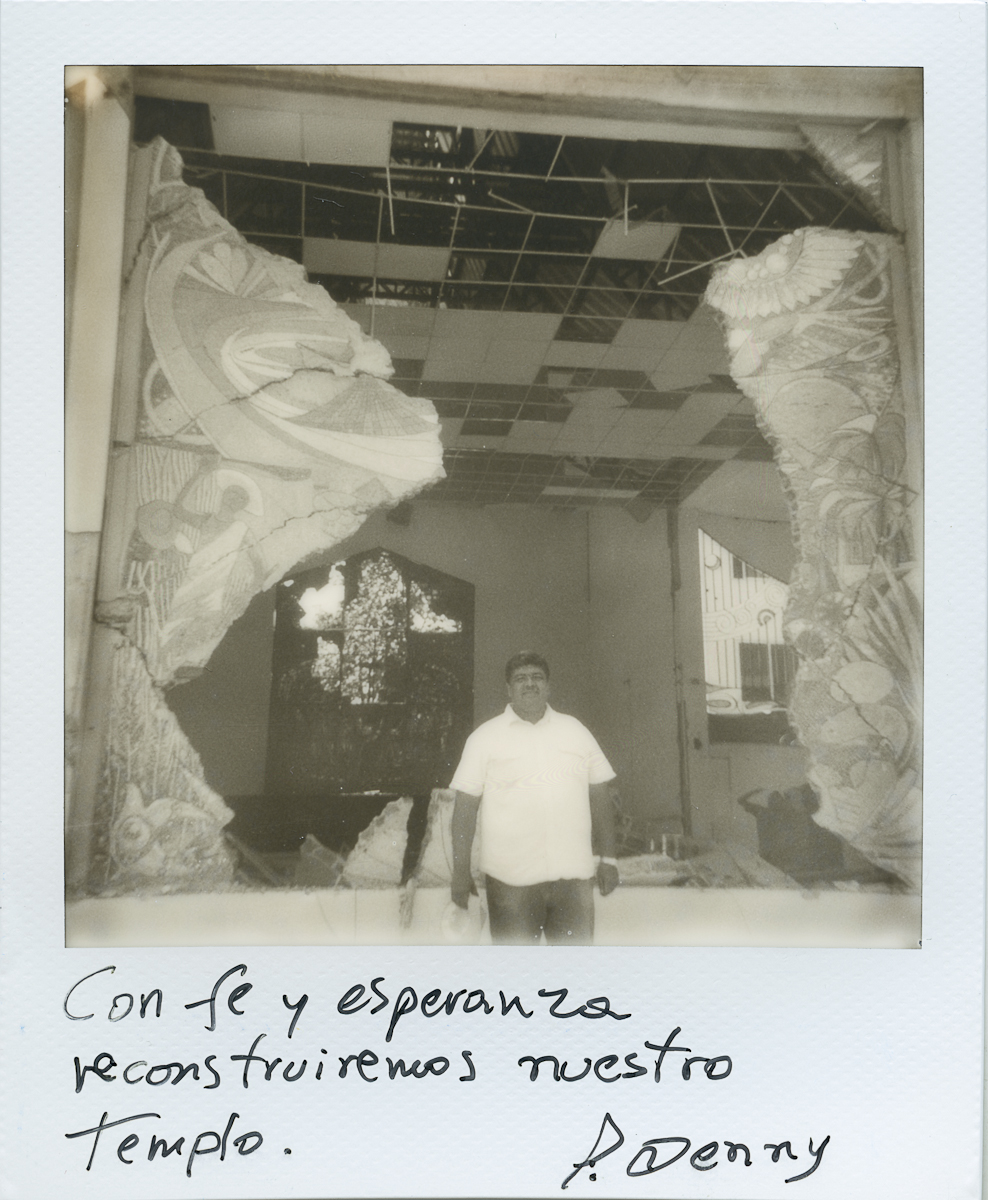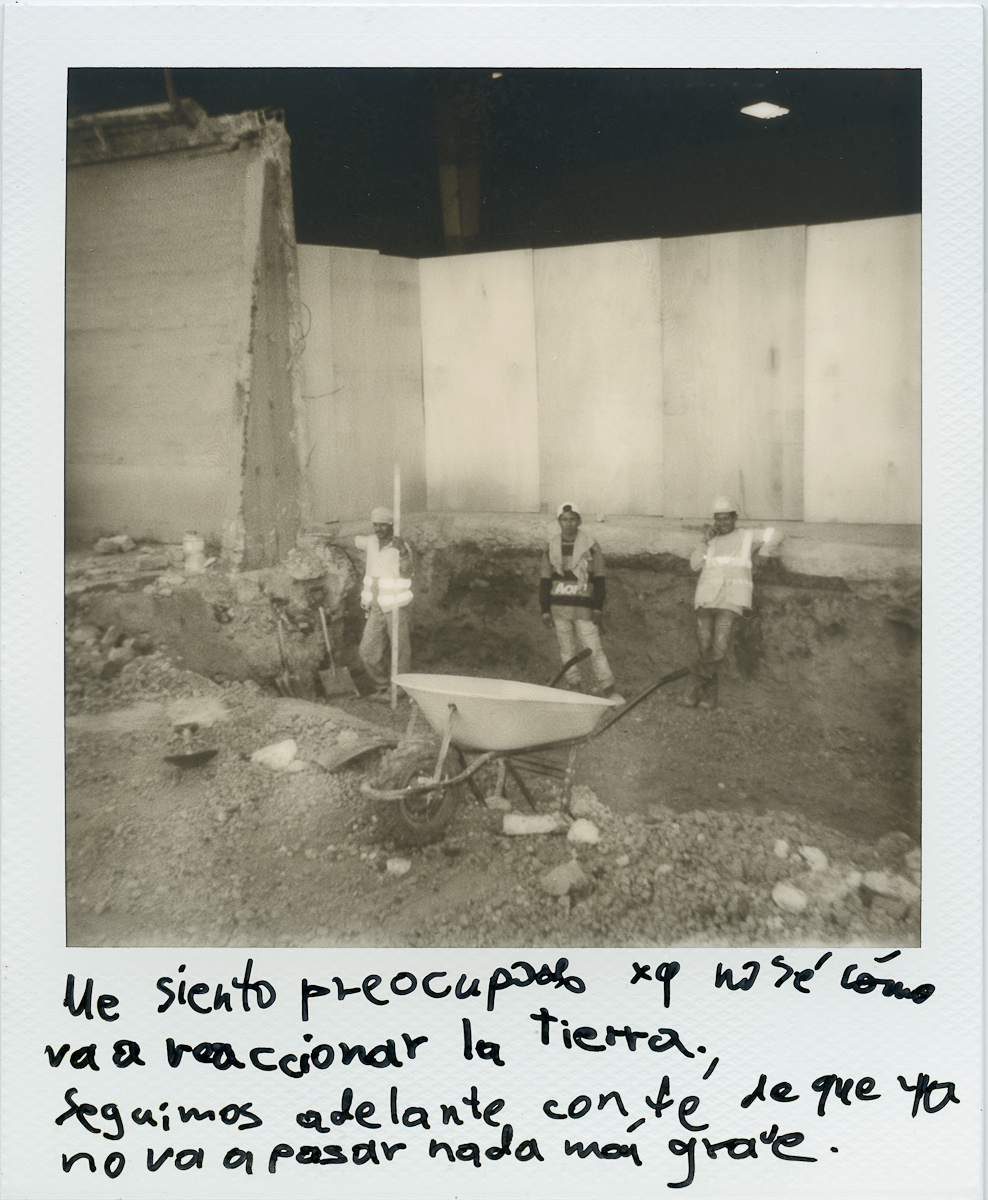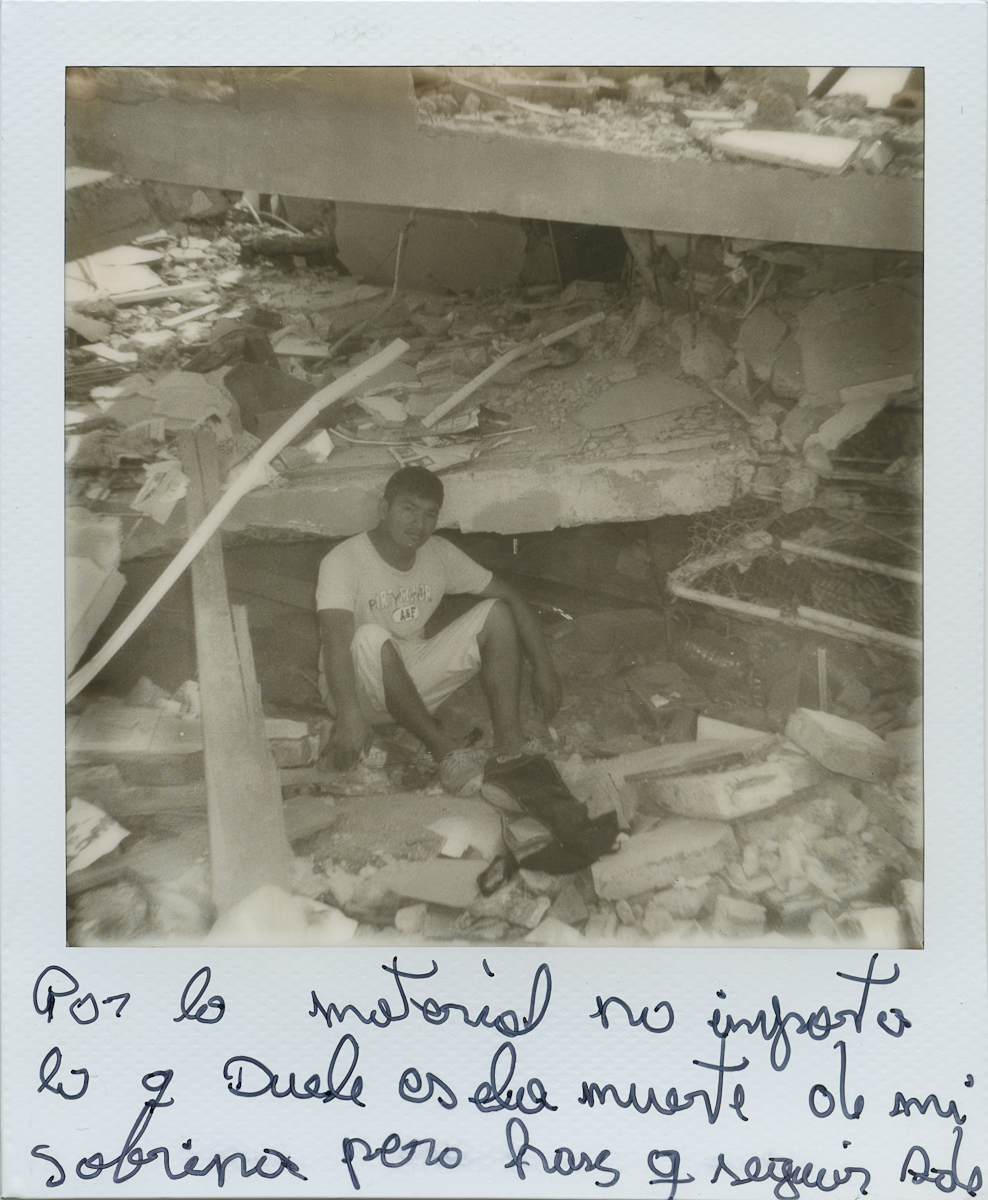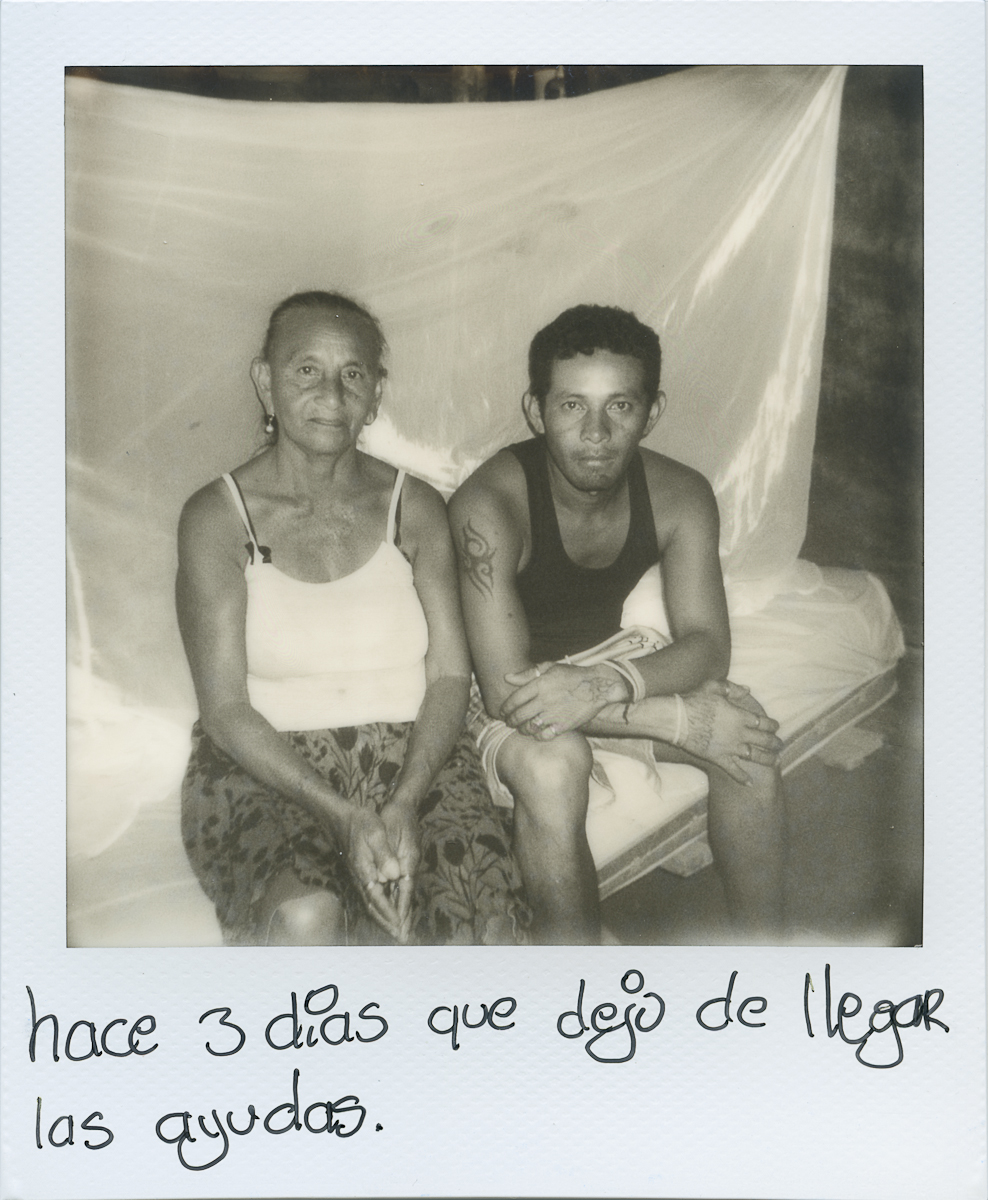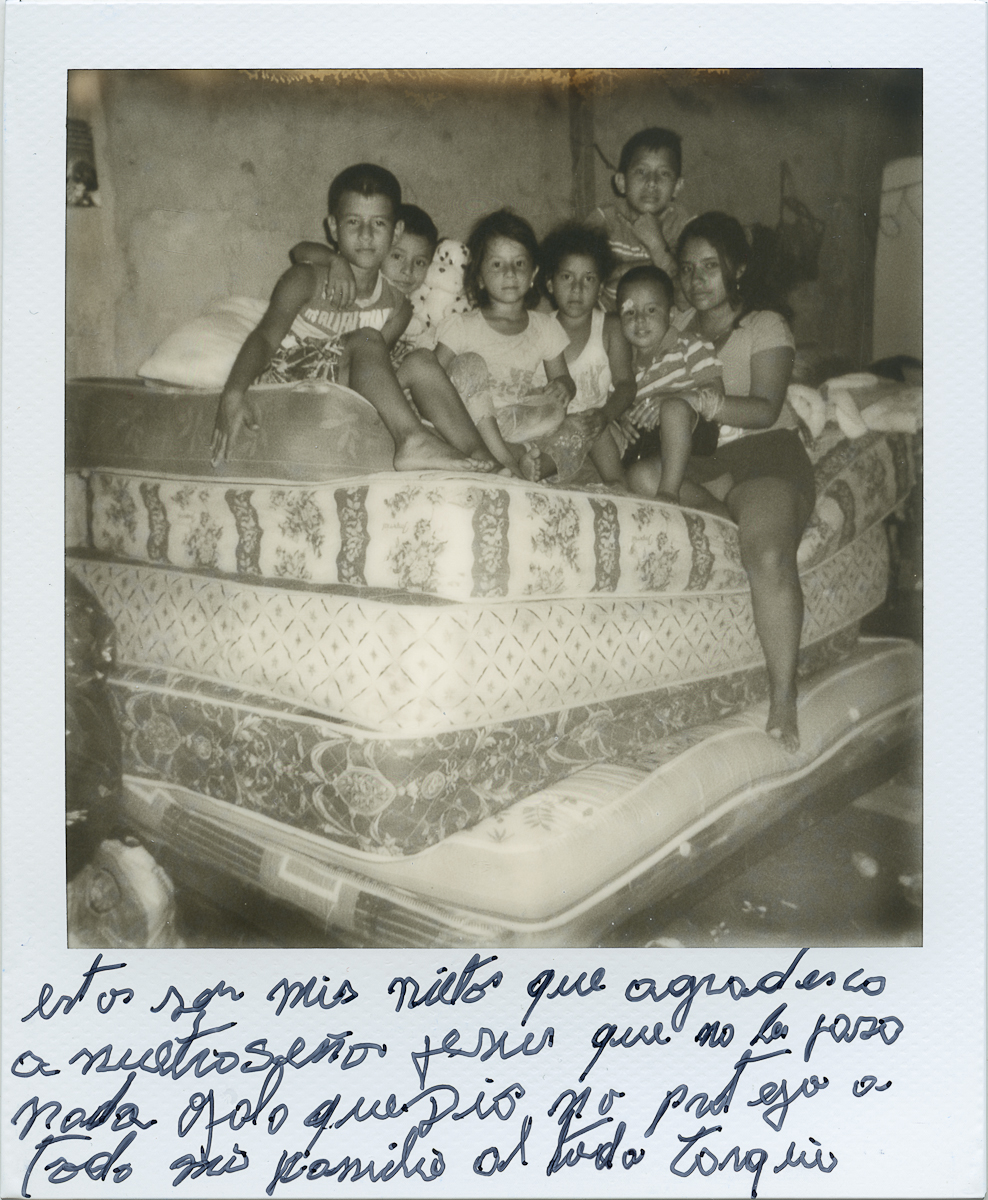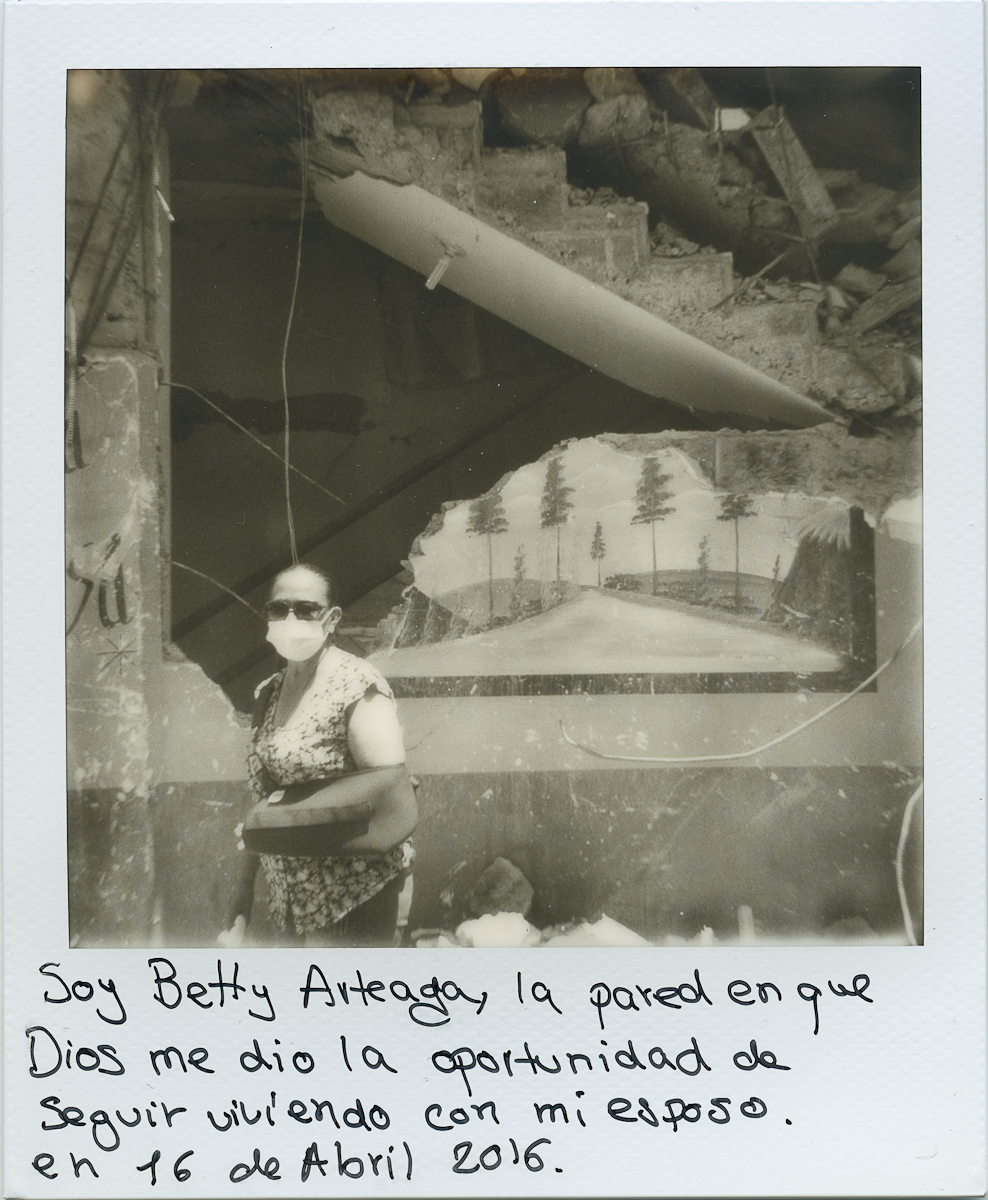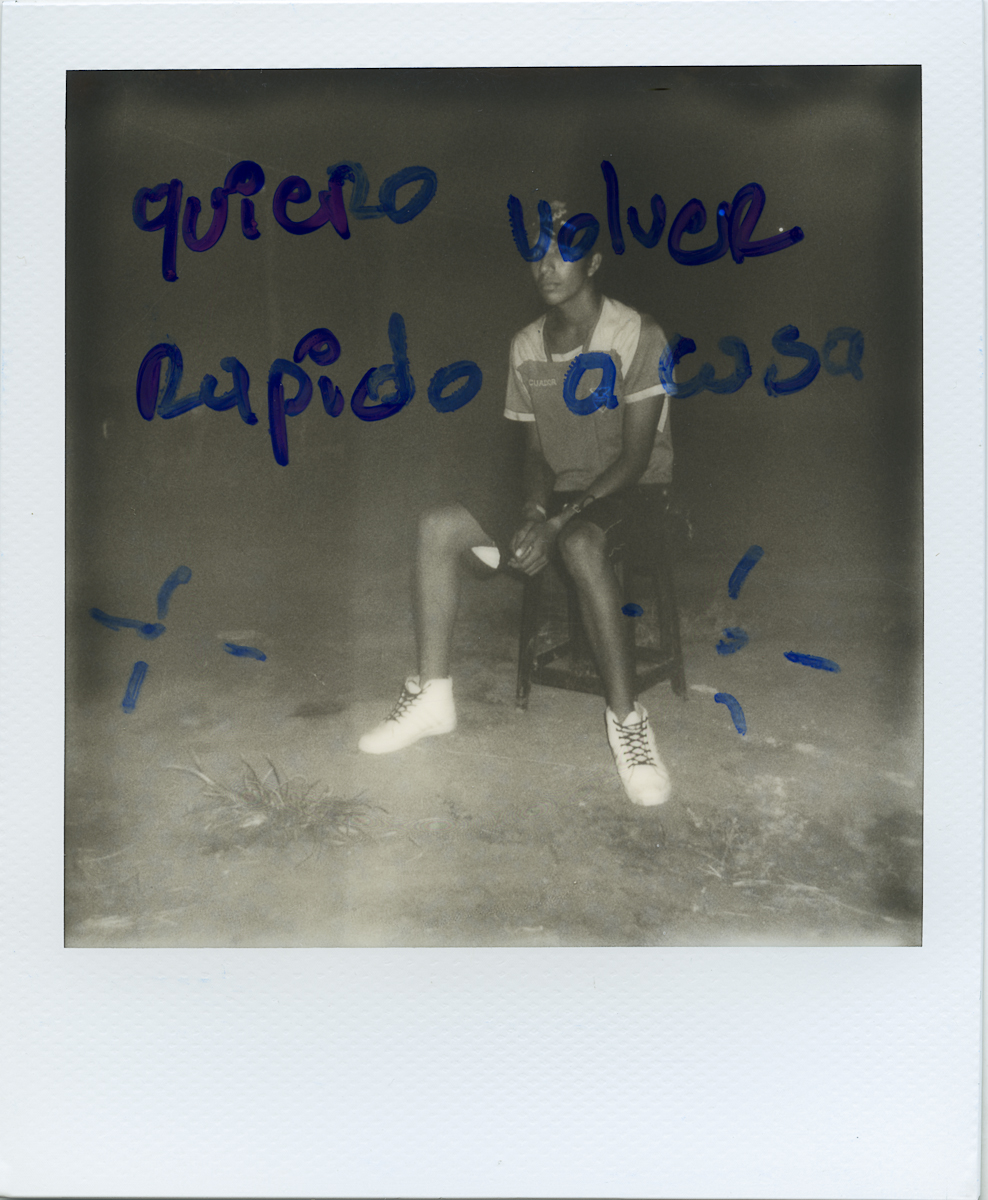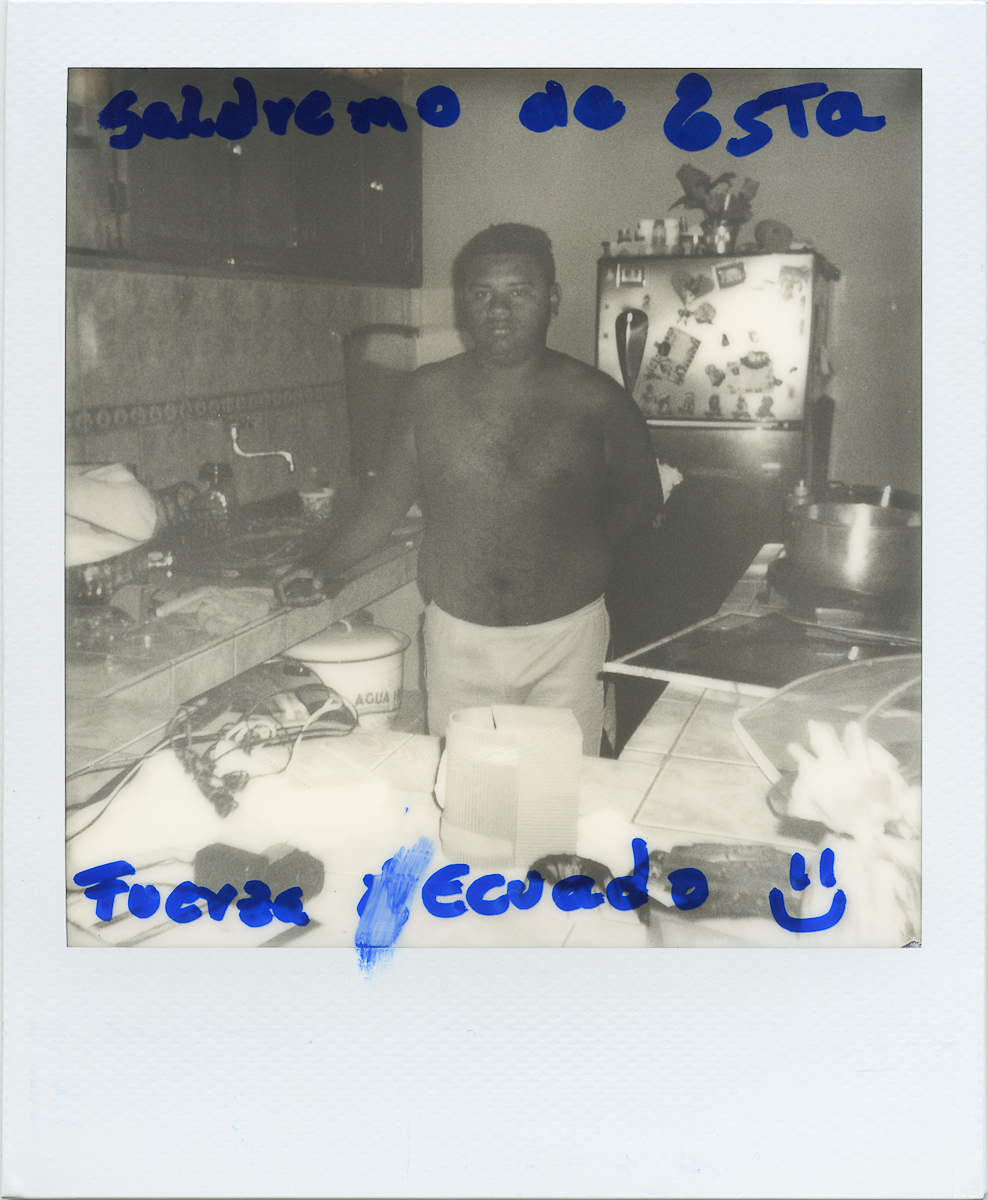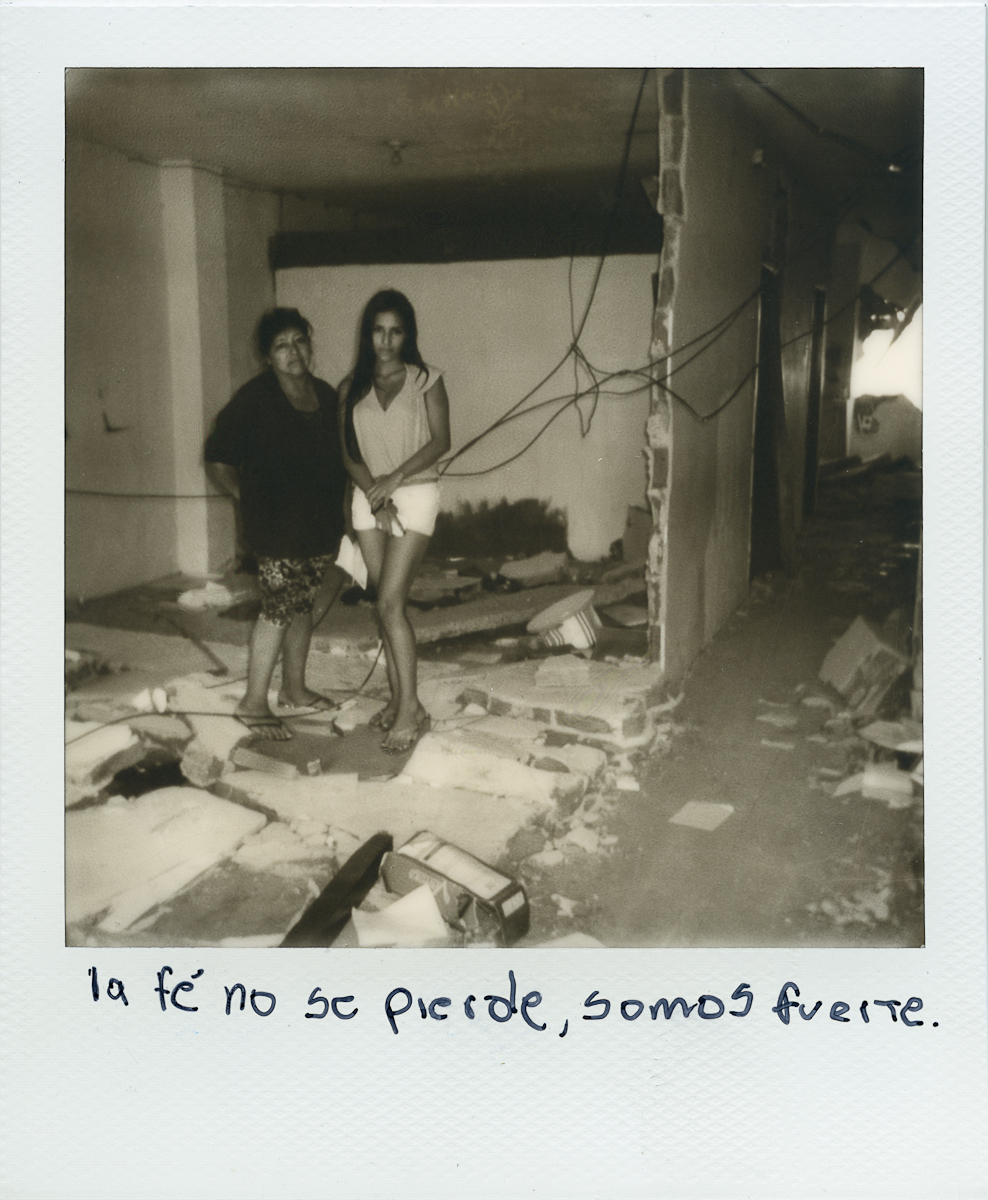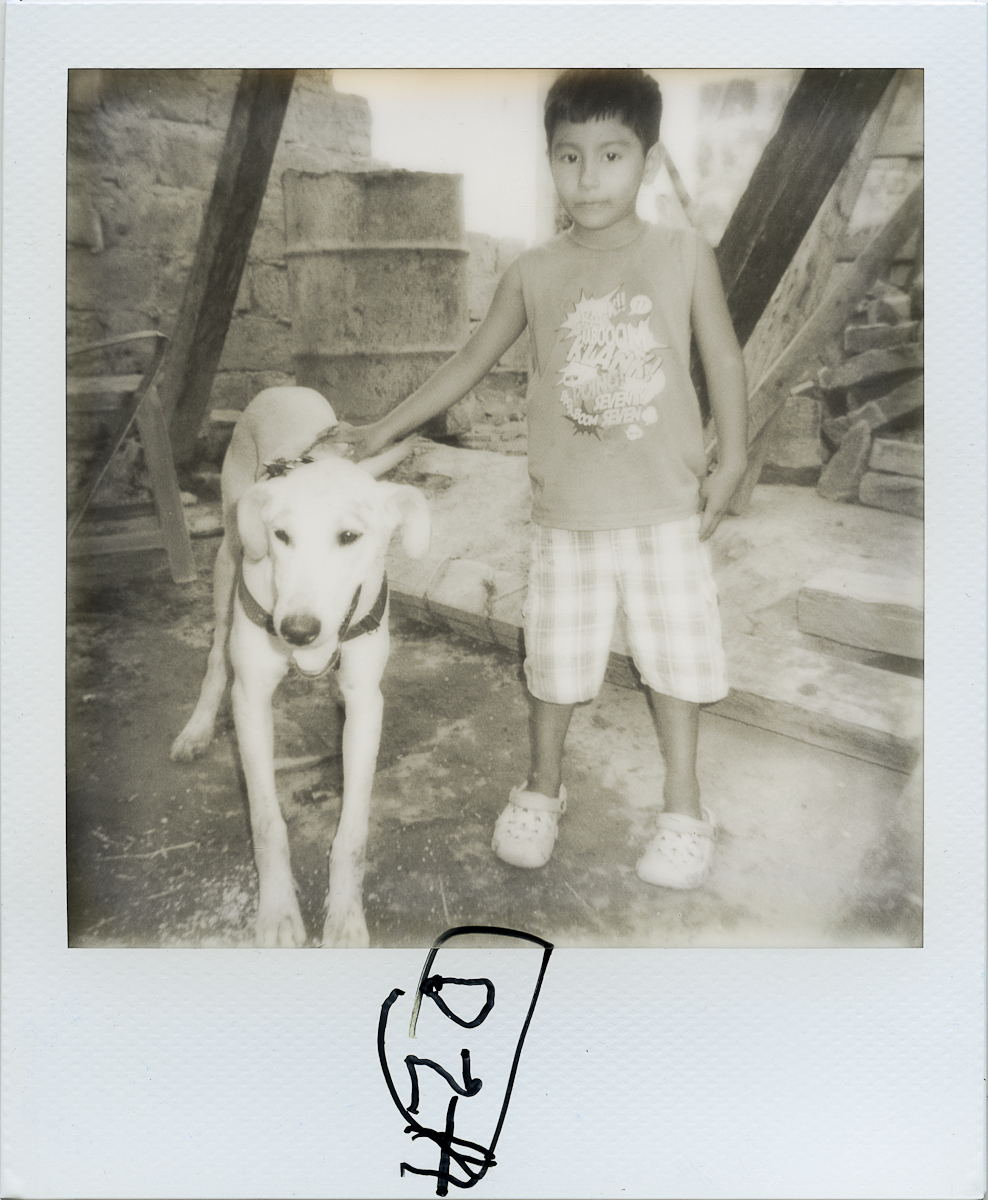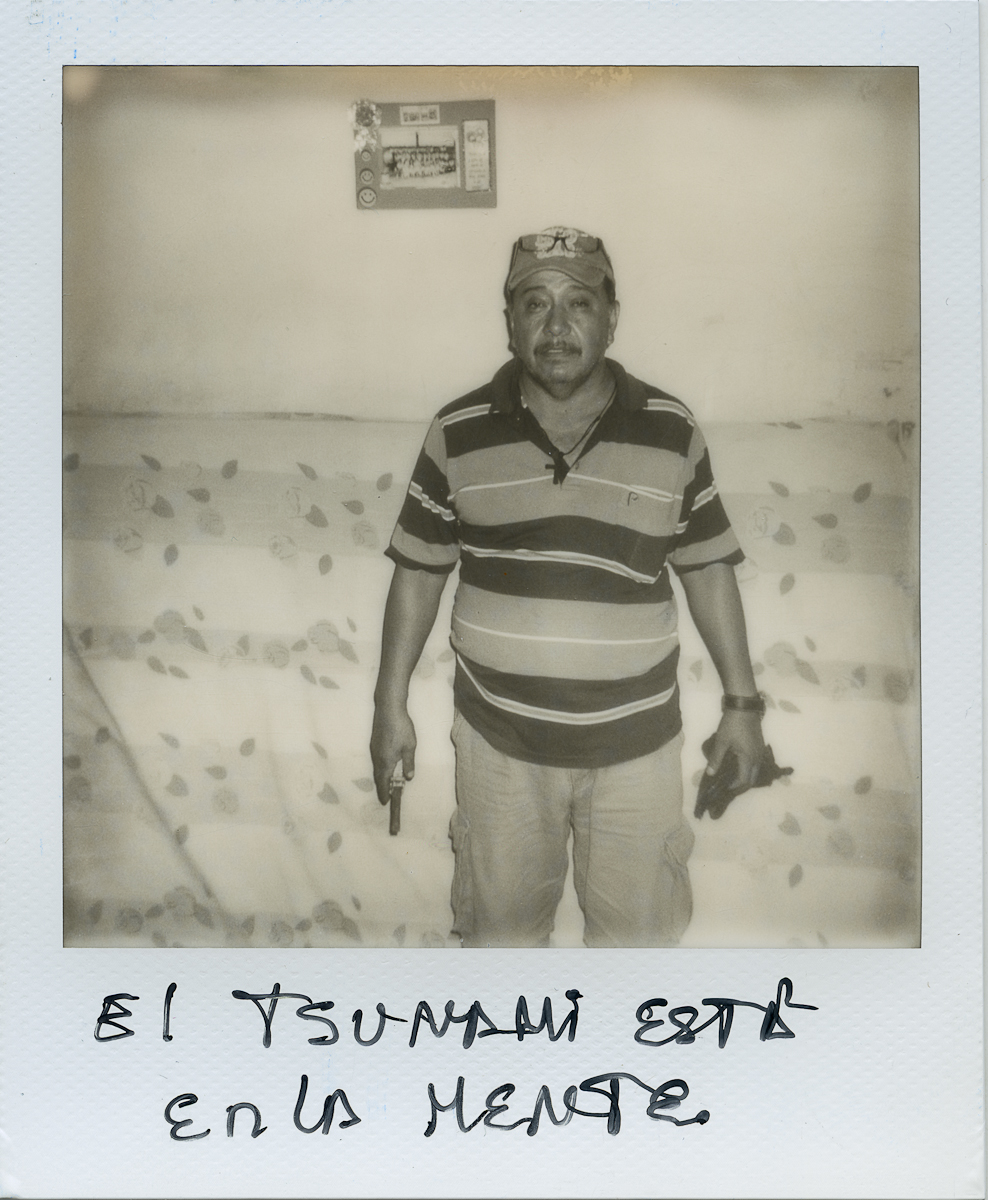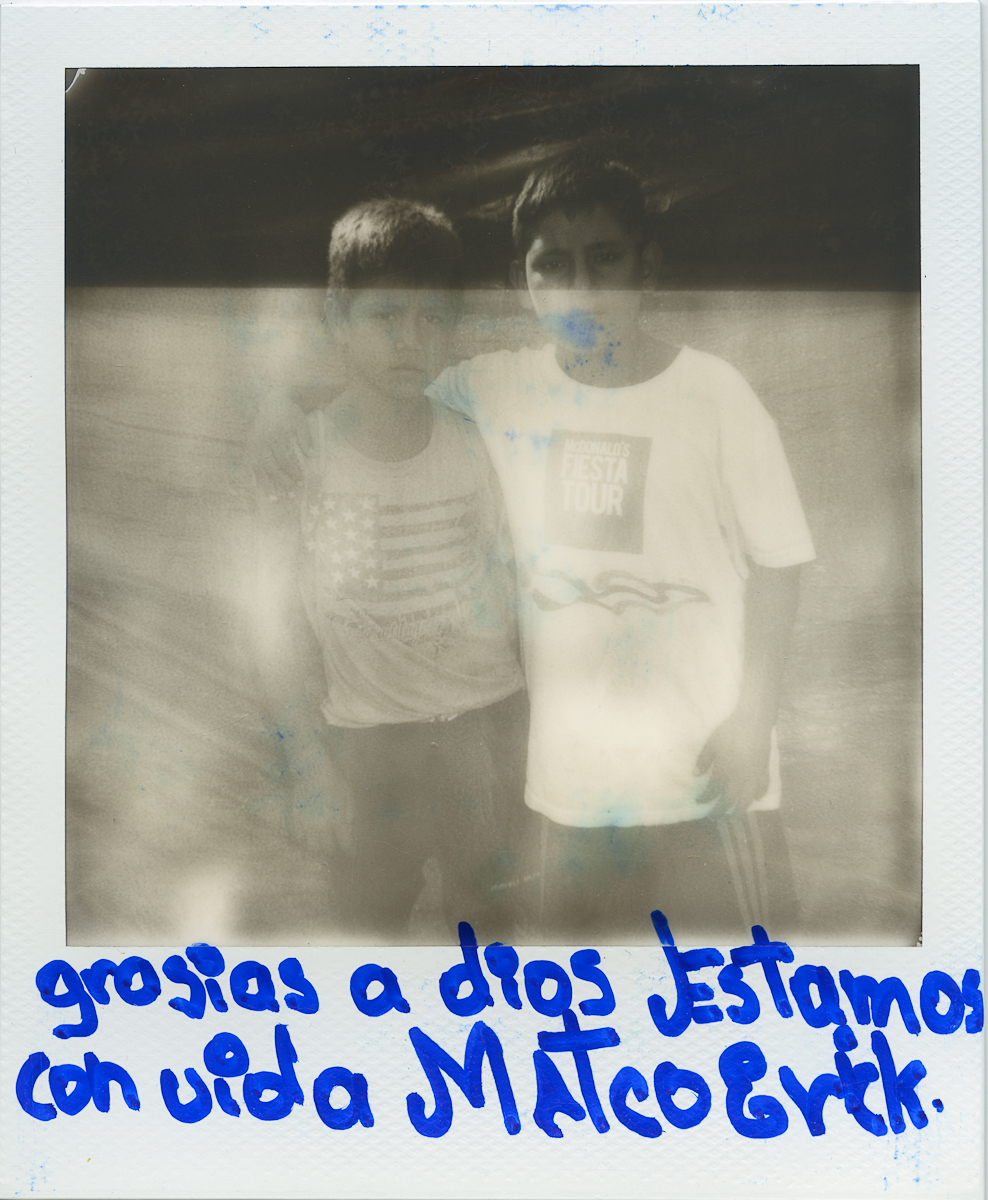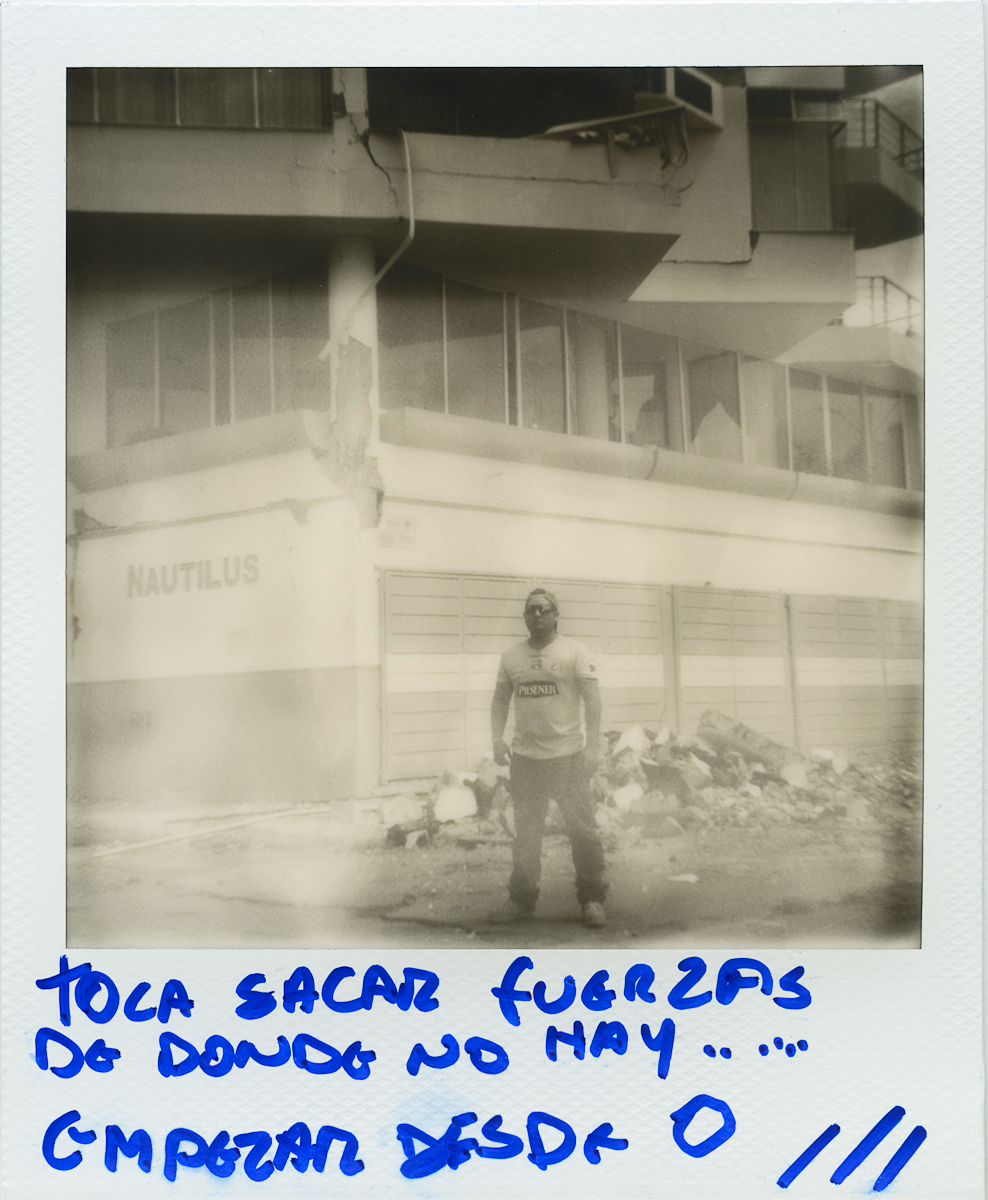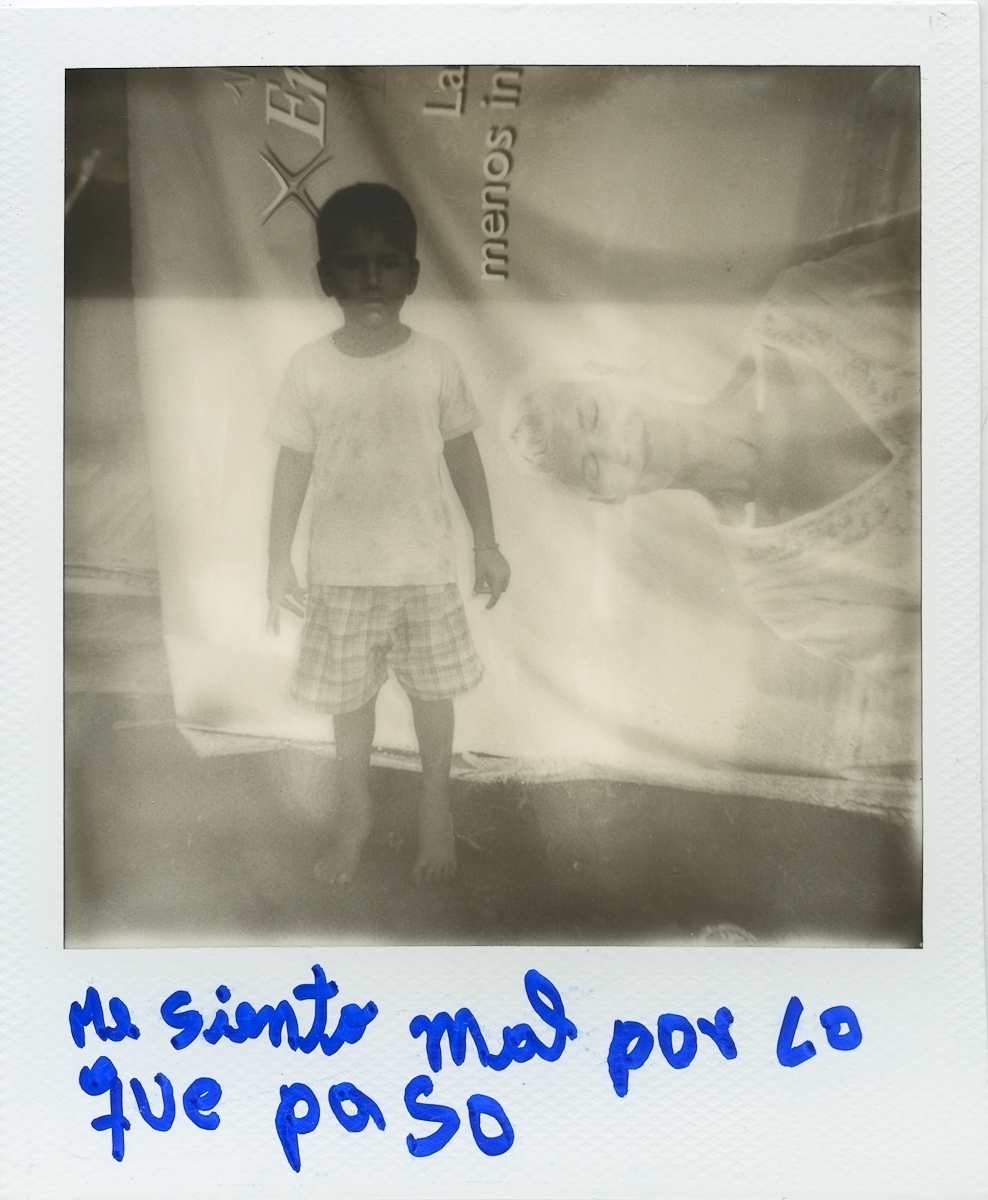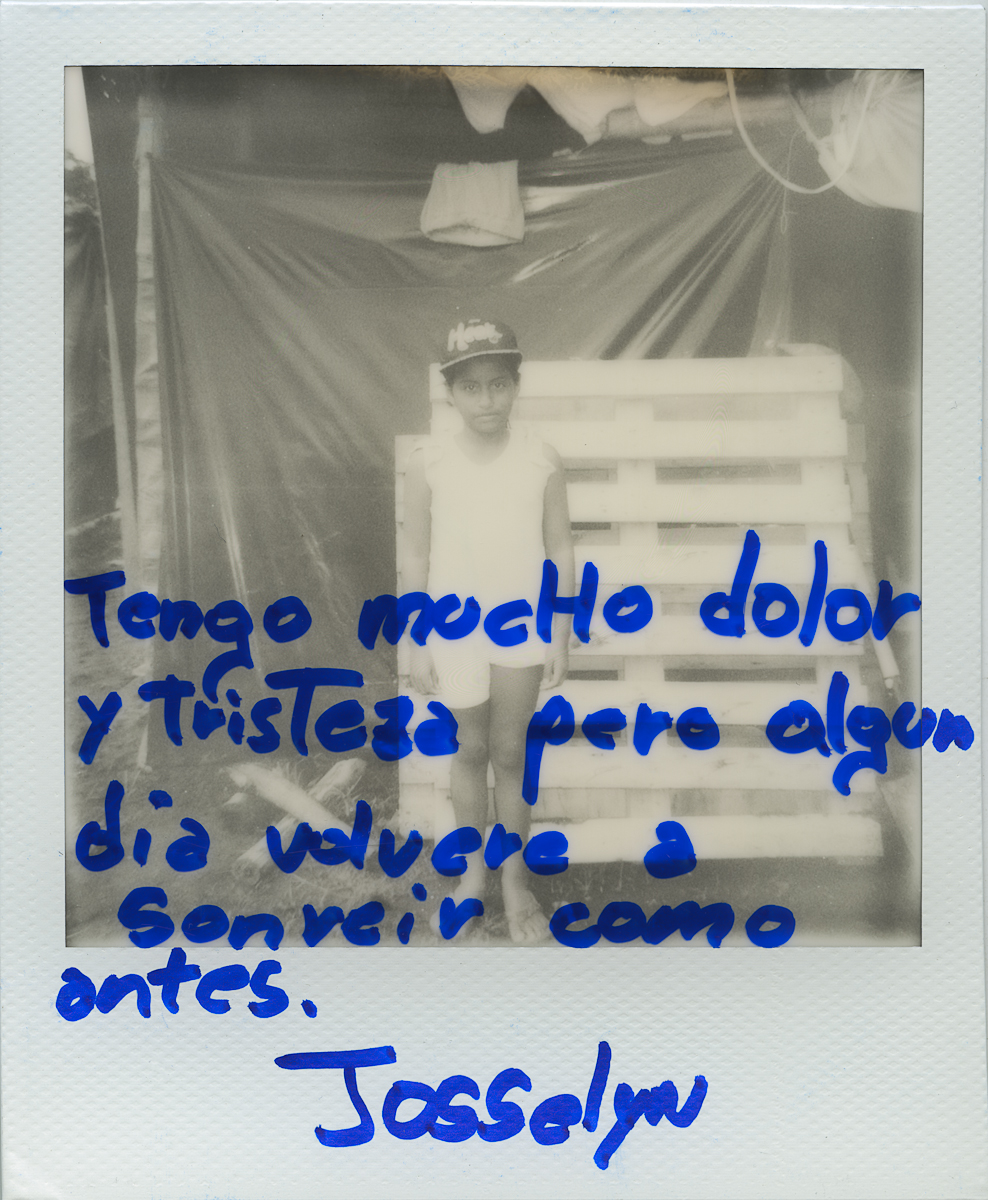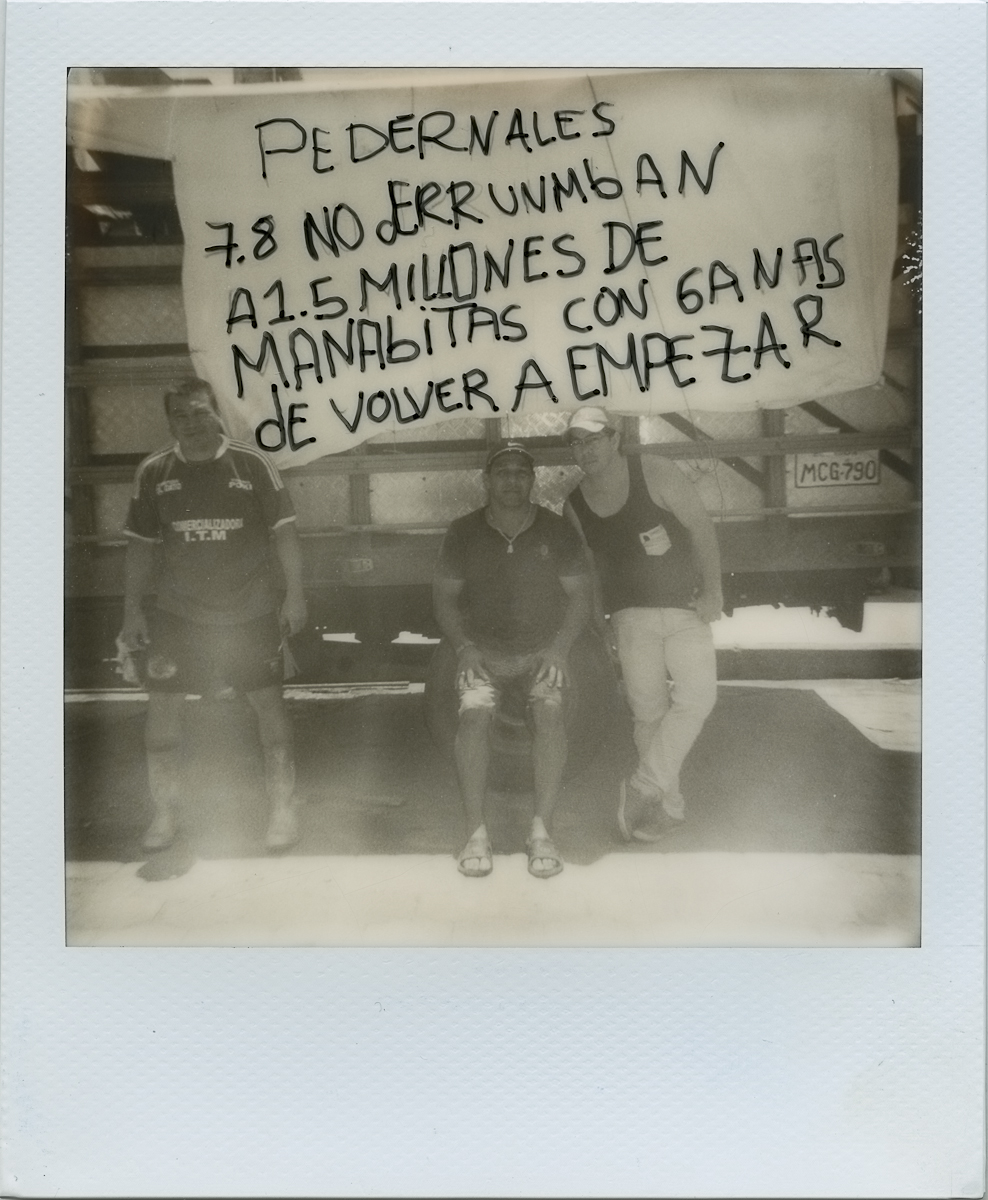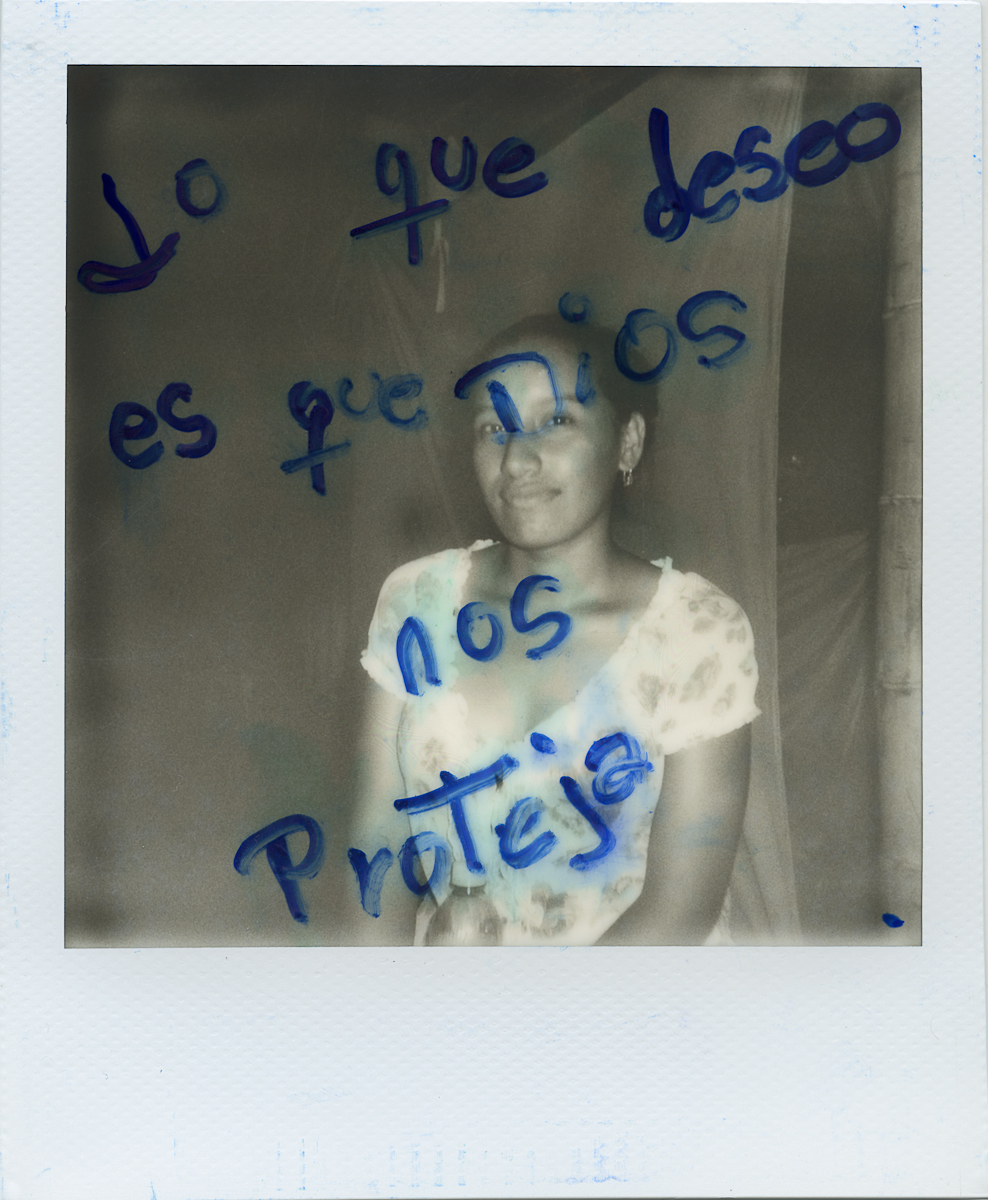Handwritten / Puño y Letra
Portraits And Thoughts after last Ecuador's Earthquake
By Isadora Romero & Misha Vallejo
[English]
Handwritten
What to say when you have lost everything? When you lost a member of your
family, a neighbour or a friend? What to say when the future is uncertain and
the present precarious? The need to talk, however, is imperative.
To tell how they lived and live this tragedy, how they felt it then and feel it now, what was
lost and what hurts. The need to tell their desires, needs and hopes. To tell it
with their presence, their words and their footprints, which are gradually being
erased, as the debris is cleared and the assistance, wanes.
This project began one week after the 7.8 degrees Richter scale earthquake
hit the Ecuadorian coast. Based on the premise of psychological emergency,
the photographs were taken during a listening and empathic containment
process. The pictures are portraits in a fleeting instant, as brief as the moment
when these people’s close and familiar world came to a hold.
Then the catharsis: to describe what they feel, think or desire.
The photographs were taken in the province of Manabí, in six of the most
affected cities by the earthquake. People of San Vicente, Canoa, Bahía,
Portoviejo, Manta and Pedernales tell their stories. They do it from the
temporary shelters where they now live, from the rubble of their former homes
or from tents outside their houses where they sleep in fear of new tremors.
They tell them also from the still standing, broken and empty structures that
they visit daily, waiting for the technical evaluation that will confirm that their
houses can be repaired or should be demolished.
How to continue when everything or almost everything is lost? With the
temperance of these people, who are much more than a number in a statistic
and with the strength of helping hands that will still be needed for a long time
during the reconstruction.
[Español]
Puño y Letra
¿Qué decir cuando se ha perdido todo? ¿Cuando no se encontró al familiar,
al vecino, al amigo? Cuando el futuro es incierto y el presente precario.
La necesidad de hablar, sin embargo, es imperante. Contar cómo se vivió y
se vive, qué se sintió y se siente, qué se perdió y qué duele. Contar sus
esperanzas, anhelos y necesidades. Contar con la presencia y las letras, con
las huellas que se van borrando, como se borran de a poco los escombros y
la ayuda que comienza a menguar.
Este proyecto se inició una semana después del terremoto de 7.8 grados en
la escala de Richter que afectó a la costa ecuatoriana. Partiendo de la
premisa de la emergencia psicológica, las fotografías se realizaron durante
un proceso de atenta escucha y contención empática. Las imágenes son un
retrato en un instante, fugaz como el momento, en el que el mundo conocido
para estas personas se vino abajo. Luego la catarsis: describir qué sienten
estas personas, un pensamiento o reflexión.
Las fotografías fueron realizadas en seis ciudades de Manabí, la provincia
más afectada. Personas de San Vicente, Canoa, Bahía, Portoviejo, Manta y
Pedernales, cuentan sus historias desde sus albergues temporales, desde los
escombros de sus casas o desde las carpas fuera de ellas, donde duermen
por temor a una réplica. También hablan desde estructuras aún en pie pero
quebradas y vacías, que visitan a diario mientras aguardan la evaluación
técnica que les dé la esperanza de volver para repararlas o les confirme que
serán demolidas.
¿Cómo se sigue cuando se perdió todo o casi todo? Se sigue con la
templanza de estas personasque son mucho más que un número en una
estadística, y con la fuerza de las manos solidarias que acuden en su ayuda y
que aún se necesitarán por largo tiempo para la reconstrucción.
About the photographers:
